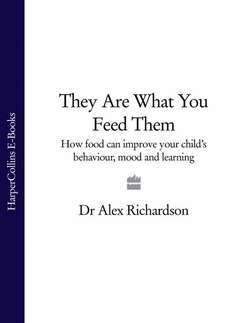Читать книгу They Are What You Feed Them: How Food Can Improve Your Child’s Behaviour, Mood and Learning - Dr Richardson Alex - Страница 90
Copper
ОглавлениеCopper, along with iron, helps form your red blood cells—so a lack of this mineral can actually be another possible cause of ‘iron-deficiency anaemia’. It’s also very important in keeping your bones, blood vessels, nerves and immune system healthy, as well as your skin. Copper deficiency has been implicated in thyroid abnormalities, cardiovascular disease, thrombosis, poor glucose tolerance, some immune system abnormalities and the formation of collagen (an elastic substance important in tissue health and healing). We’re told that copper deficiency in the UK is rare (mainly because our water is usually delivered in copper pipes), but some researchers in the field would strongly disagree. No official ‘dietary deficiency’ levels have even been established, but at least one-third, and in some age groups four-fifths, of UK children get less than the ‘reference nutrient intake’ of copper from their diets.34
Copper is found in green leafy vegetables, dried fruits (like prunes), beans, nuts and potatoes, but the amount in our vegetables has been declining owing to mineral depletion of our soils.35 Other sources include kidney and liver, shellfish, yeast and cocoa (so there’s even a little in chocolate—but please don’t let that be your child’s main dietary source, will you?).
Copper and zinc in the body must be very carefully balanced, because they compete for absorption, and in many other ways. (For this reason, zinc can play a key part in the treatment of Wilson’s disease—a rare genetic syndrome in which copper can’t be excreted, and the build-up can lead to progressive poisoning and death.) Many children with hyperactivity, attentional problems and poor impulse control seem to show an elevated copper-to-zinc ratio on biochemical testing. However, some children with similar symptoms have exactly the opposite pattern—raised zinc and low copper.
If your child is fatigued, pale, has skin sores, oedema (fluid retention and swelling), slowed growth, hair loss, anorexia, diarrhoea or dermatitis, these could all be symptoms of insufficient copper (although all of them could have other causes). Infants fed almost exclusively on cows’ milk products without a source of copper can be at particular risk.
